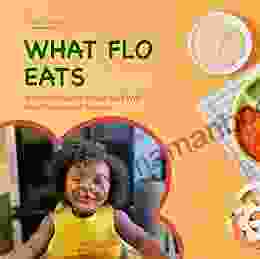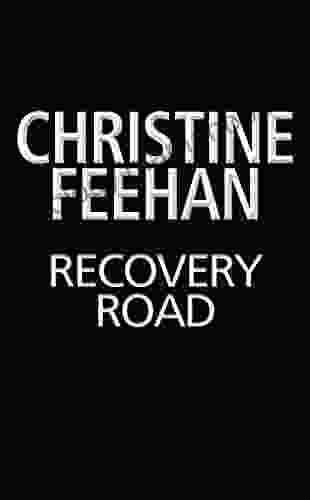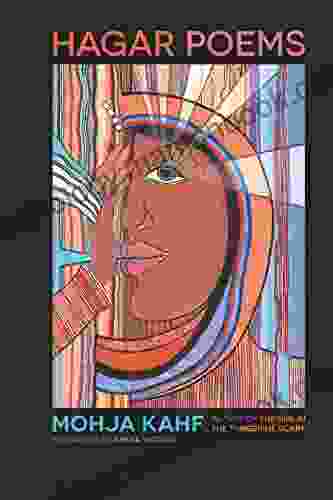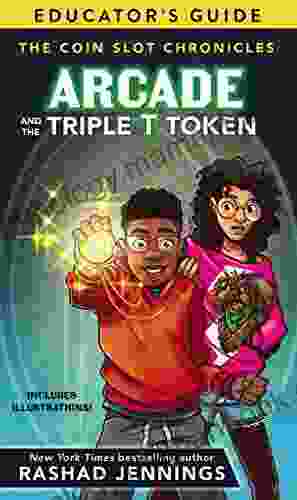Nurturing Young Scribes: A Comprehensive Guide to Teaching Writing in Kindergarten

In the realm of early childhood education, fostering literacy skills holds paramount importance. Writing, as an integral component of literacy, plays a pivotal role in cognitive development, language acquisition, and self-expression. Kindergarten marks a crucial stage for laying the foundation for writing proficiency, setting the stage for future academic success. This comprehensive guide delves into the multifaceted aspects of teaching writing in kindergarten, providing educators with practical strategies, evidence-based practices, and inspiring insights.
The Benefits of Teaching Writing in Kindergarten
Kindergarten writing instruction offers a myriad of benefits for young learners:
4.5 out of 5
| Language | : | English |
| File size | : | 19368 KB |
| Text-to-Speech | : | Enabled |
| Screen Reader | : | Supported |
| Enhanced typesetting | : | Enabled |
| Word Wise | : | Enabled |
| Print length | : | 160 pages |
- Cognitive Development: Writing stimulates problem-solving, critical thinking, and the ability to organize thoughts and ideas.
- Language Development: Writing enhances vocabulary development, grammar awareness, and sentence structure.
- Self-Expression: Writing provides a platform for children to express their creativity, imagination, and unique perspectives.
- Fine Motor Skills: Writing involves intricate movements that strengthen hand-eye coordination and fine motor skills.
- Future Academic Success: Early writing experiences establish a strong foundation for later literacy development in reading, writing, and language arts.
Essential Components of Writing Instruction
Effective writing instruction in kindergarten encompasses three essential components:
1. Prewriting
- Brainstorming: Engage students in discussions, asking questions to generate ideas and spark writing inspiration.
- Drawing and Scribbling: Encourage children to sketch or write symbols to represent their thoughts and ideas.
- Shared Writing: Collaborate with students to compose a piece of writing as a group, scaffolding their understanding of writing concepts.
2. Writing
- Letter Formation: Introduce letter shapes and sounds, providing ample opportunities for writing practice.
- Word Formation: Guide students in forming simple words by combining sounds and letters.
- Sentence Construction: Teach the concept of words working together to form sentences, encouraging students to experiment with sentence structure.
3. Postwriting
- Revising: Encourage students to review and edit their writing, making changes to improve clarity and accuracy.
- Publishing: Celebrate students' writing by sharing their work with peers, parents, or the class.
- Reflection: Engage students in self-reflection about their writing process, fostering awareness of their strengths and areas for improvement.
Innovative Approaches to Writing Instruction
Beyond the traditional writing components, educators can explore innovative approaches to engage kindergarteners in the writing process:
Interactive Writing
- Write-Alongs: Project a piece of writing on the screen and write it out together as a class, emphasizing the writing process.
- Choral Reading: Have students read a piece of writing aloud together, focusing on fluency and expression.
Technology-Enhanced Writing
- Tablet Writing: Utilize tablets or touchscreens to provide a hands-on writing experience, fostering letter recognition and formation.
- Assistive Technology: Explore writing tools and software that support students with learning challenges or disabilities.
Real-World Connections
- Environmental Literacy: Connect writing to environmental themes, such as writing descriptions of nature or creating stories inspired by the outdoors.
- Social Emotional Learning: Foster writing as a tool for expressing emotions and promoting empathy through storytelling and letter writing.
Assessment and Differentiation
Assessment is crucial to monitor students' progress and tailor instruction accordingly:
Assessment Strategies
- Observations: Observe students during writing activities, noting their letter formation, sentence structure, and writing process.
- Writing Samples: Collect student writing samples over time to assess their writing development.
- Portfolios: Create writing portfolios that showcase students' best work and document their writing journey.
Differentiation Strategies
- Scaffolding: Provide additional support and guidance for students who need assistance, such as sentence starters or writing templates.
- Challenge Activities: Offer extensions and enrichment activities for students who need more challenge, such as prompting them to write longer stories or explore different genres.
- Flexible Grouping: Group students based on their writing abilities to create targeted instruction groups.
Teaching writing in kindergarten is a multifaceted endeavor that enriches children's cognitive, linguistic, and social development. By embracing essential components, innovative approaches, assessment strategies, and differentiation, educators can create a vibrant and supportive environment that nurtures young writers. As children progress through kindergarten and beyond, the foundation laid in their early writing experiences will continue to empower them as confident and proficient writers.
References
- Fletcher, J. M., & Graham, S. (2011). Writing in kindergarten: Exploring the dimensions of narrative writing. Early Childhood Research Quarterly, 26(2),227-245.
- Graham, S., & Hebert, M. A. (2010). The writing needs of emerging writers: A review of the research. Review of Educational Research, 80(3),435-476.
- Graves, D. H. (2003). Young writers, old lies: How children learn to write and why schools can't teach it. Heinemann.
- National Council of Teachers of English. (2010). Standards for the English language arts and literacy in kindergarten through grade 12. National Council of Teachers of English.
- Routman, R. (2014). Writing essentials: Raising expectations and student achievement in writing. Heinemann.
Image Alt Attribute: A group of kindergarten students sitting at a table, writing with pencils on paper.
4.5 out of 5
| Language | : | English |
| File size | : | 19368 KB |
| Text-to-Speech | : | Enabled |
| Screen Reader | : | Supported |
| Enhanced typesetting | : | Enabled |
| Word Wise | : | Enabled |
| Print length | : | 160 pages |
Do you want to contribute by writing guest posts on this blog?
Please contact us and send us a resume of previous articles that you have written.
 Top Book
Top Book Novel
Novel Fiction
Fiction Nonfiction
Nonfiction Literature
Literature Paperback
Paperback Hardcover
Hardcover E-book
E-book Audiobook
Audiobook Bestseller
Bestseller Classic
Classic Mystery
Mystery Thriller
Thriller Romance
Romance Fantasy
Fantasy Science Fiction
Science Fiction Biography
Biography Memoir
Memoir Autobiography
Autobiography Poetry
Poetry Drama
Drama Historical Fiction
Historical Fiction Self-help
Self-help Young Adult
Young Adult Childrens Books
Childrens Books Graphic Novel
Graphic Novel Anthology
Anthology Series
Series Encyclopedia
Encyclopedia Reference
Reference Guidebook
Guidebook Textbook
Textbook Workbook
Workbook Journal
Journal Diary
Diary Manuscript
Manuscript Folio
Folio Pulp Fiction
Pulp Fiction Short Stories
Short Stories Fairy Tales
Fairy Tales Fables
Fables Mythology
Mythology Philosophy
Philosophy Religion
Religion Spirituality
Spirituality Essays
Essays Critique
Critique Commentary
Commentary Glossary
Glossary Bibliography
Bibliography Index
Index Table of Contents
Table of Contents Preface
Preface Introduction
Introduction Foreword
Foreword Afterword
Afterword Appendices
Appendices Annotations
Annotations Footnotes
Footnotes Epilogue
Epilogue Prologue
Prologue Best Book Briefings
Best Book Briefings Alison Scott Wright
Alison Scott Wright James Kale Mcneley
James Kale Mcneley Hannah Vandegrift Eldridge
Hannah Vandegrift Eldridge Erin Nicholas
Erin Nicholas Daniele Mencarelli
Daniele Mencarelli Joy Callaway
Joy Callaway Jessie Ash
Jessie Ash Sinistre Ange
Sinistre Ange Edgar Allan Poe
Edgar Allan Poe Carl Sagan
Carl Sagan Mark Brownlow
Mark Brownlow Don Nardo
Don Nardo Ll Davis
Ll Davis Jinmin Wang
Jinmin Wang April Laugh
April Laugh James Ottar Grundvig
James Ottar Grundvig Nobuhiro Watsuki
Nobuhiro Watsuki Tito Rajarshi Mukhopadhyay
Tito Rajarshi Mukhopadhyay Danielle N Du Puis
Danielle N Du Puis
Light bulbAdvertise smarter! Our strategic ad space ensures maximum exposure. Reserve your spot today!

 Robert Louis StevensonDelving into the Intricacies of System Architecture: Processes, Threads,...
Robert Louis StevensonDelving into the Intricacies of System Architecture: Processes, Threads,...
 Kenneth ParkerThe Winter Garden and Other Stories: A Journey into the Enthralling World of...
Kenneth ParkerThe Winter Garden and Other Stories: A Journey into the Enthralling World of...
 George Bernard ShawThe Enigmatic You: Unraveling the Meaning Behind Jessie Ash's TG Captions
George Bernard ShawThe Enigmatic You: Unraveling the Meaning Behind Jessie Ash's TG Captions Ricky BellFollow ·17k
Ricky BellFollow ·17k Miguel de CervantesFollow ·6.3k
Miguel de CervantesFollow ·6.3k Craig BlairFollow ·13.9k
Craig BlairFollow ·13.9k Demetrius CarterFollow ·8.7k
Demetrius CarterFollow ·8.7k Mark MitchellFollow ·14k
Mark MitchellFollow ·14k Dale MitchellFollow ·15.9k
Dale MitchellFollow ·15.9k Jerry WardFollow ·9.9k
Jerry WardFollow ·9.9k Hugh BellFollow ·15.3k
Hugh BellFollow ·15.3k

 Vernon Blair
Vernon BlairThe Woman I Met in My Dream: An Unforgettable Night of...
As the veil of night...

 Carlos Fuentes
Carlos FuentesThe Ultimate Guide to Healthy Eating for Toddlers: Meal...
As a parent of a...

 Peter Carter
Peter CarterInside My Autistic Mind: A Journey of Self-Discovery and...
Autism spectrum disorder (ASD) is a...

 Isaac Asimov
Isaac AsimovA Journey Through Jane Austen's Literary Masterpieces:...
Jane Austen, the renowned English...

 Hank Mitchell
Hank MitchellAdvancements in Textiles: Science and Technology by...
The textile...

 Troy Simmons
Troy SimmonsRecovery Road: An Odyssey of Hope and Redemption by...
Recovery Road is a...
4.5 out of 5
| Language | : | English |
| File size | : | 19368 KB |
| Text-to-Speech | : | Enabled |
| Screen Reader | : | Supported |
| Enhanced typesetting | : | Enabled |
| Word Wise | : | Enabled |
| Print length | : | 160 pages |






